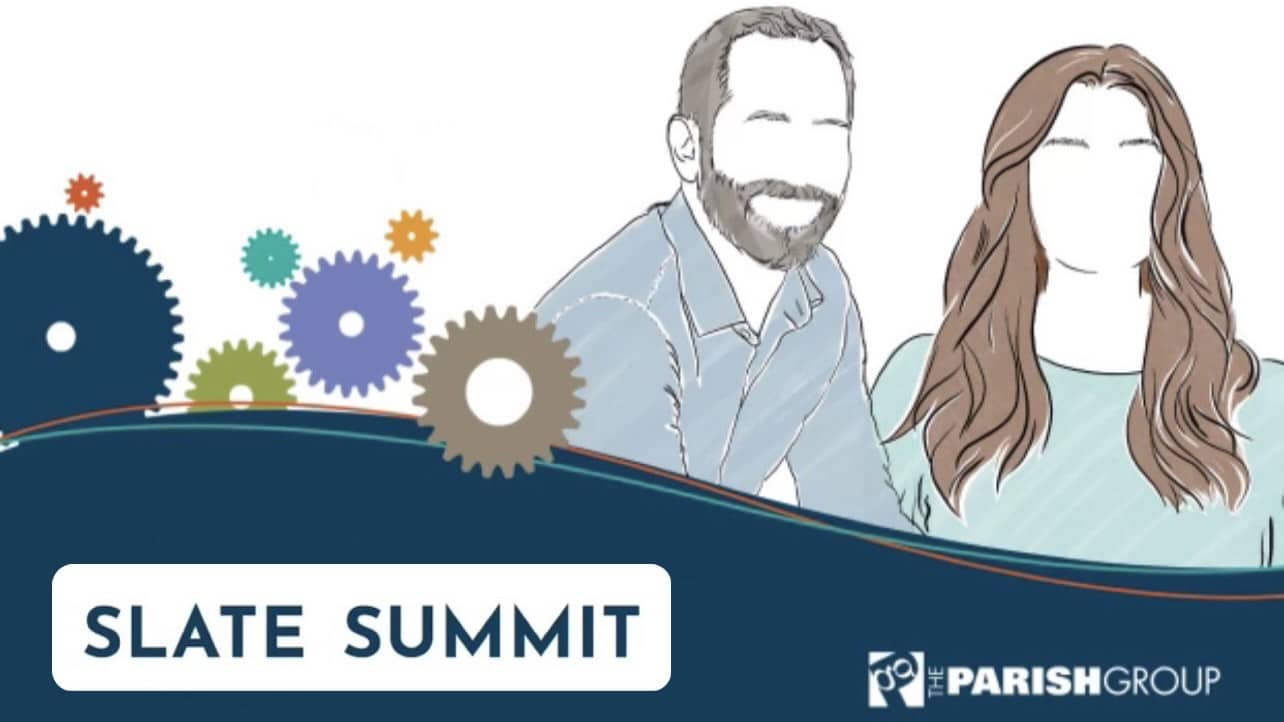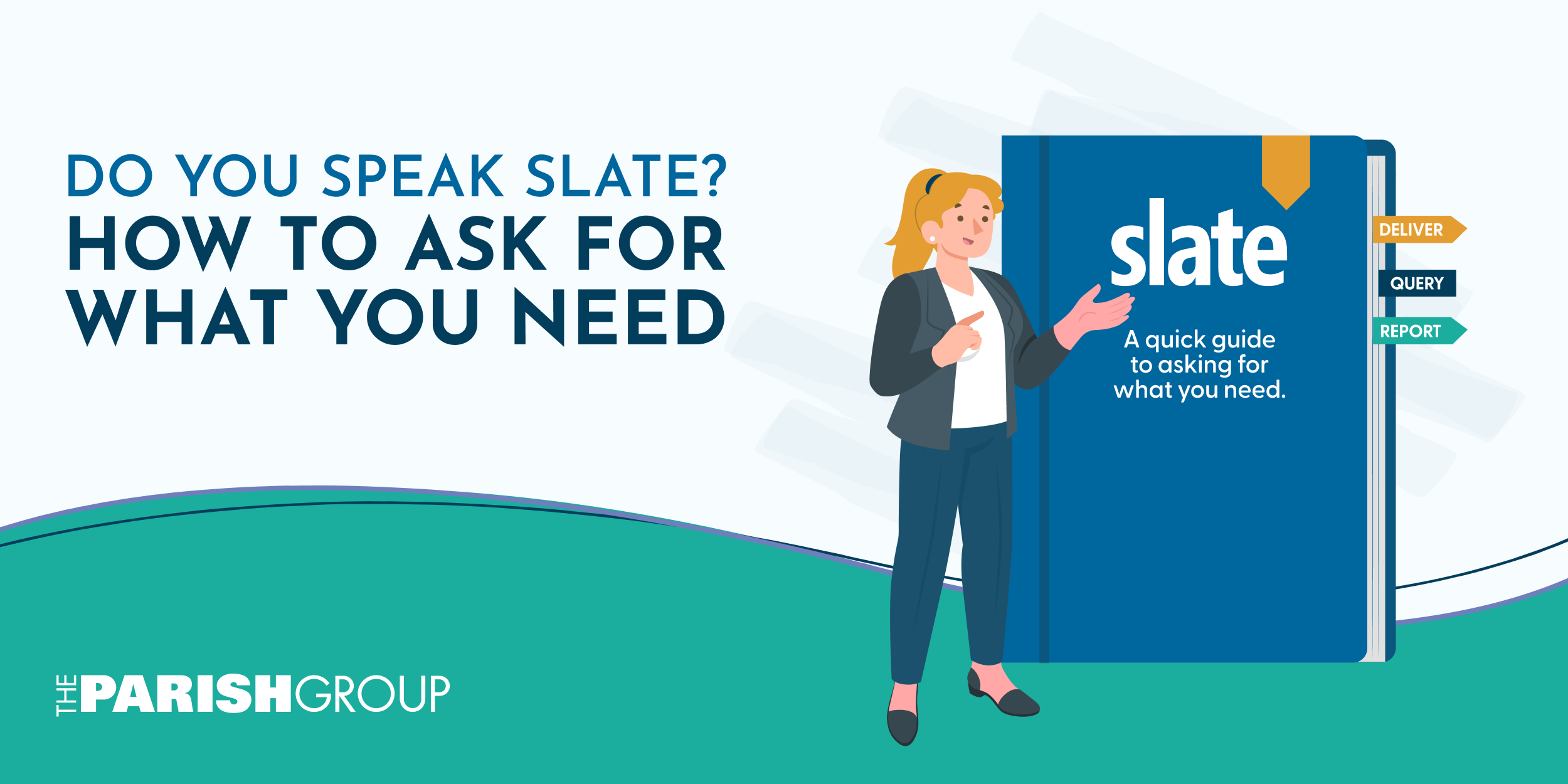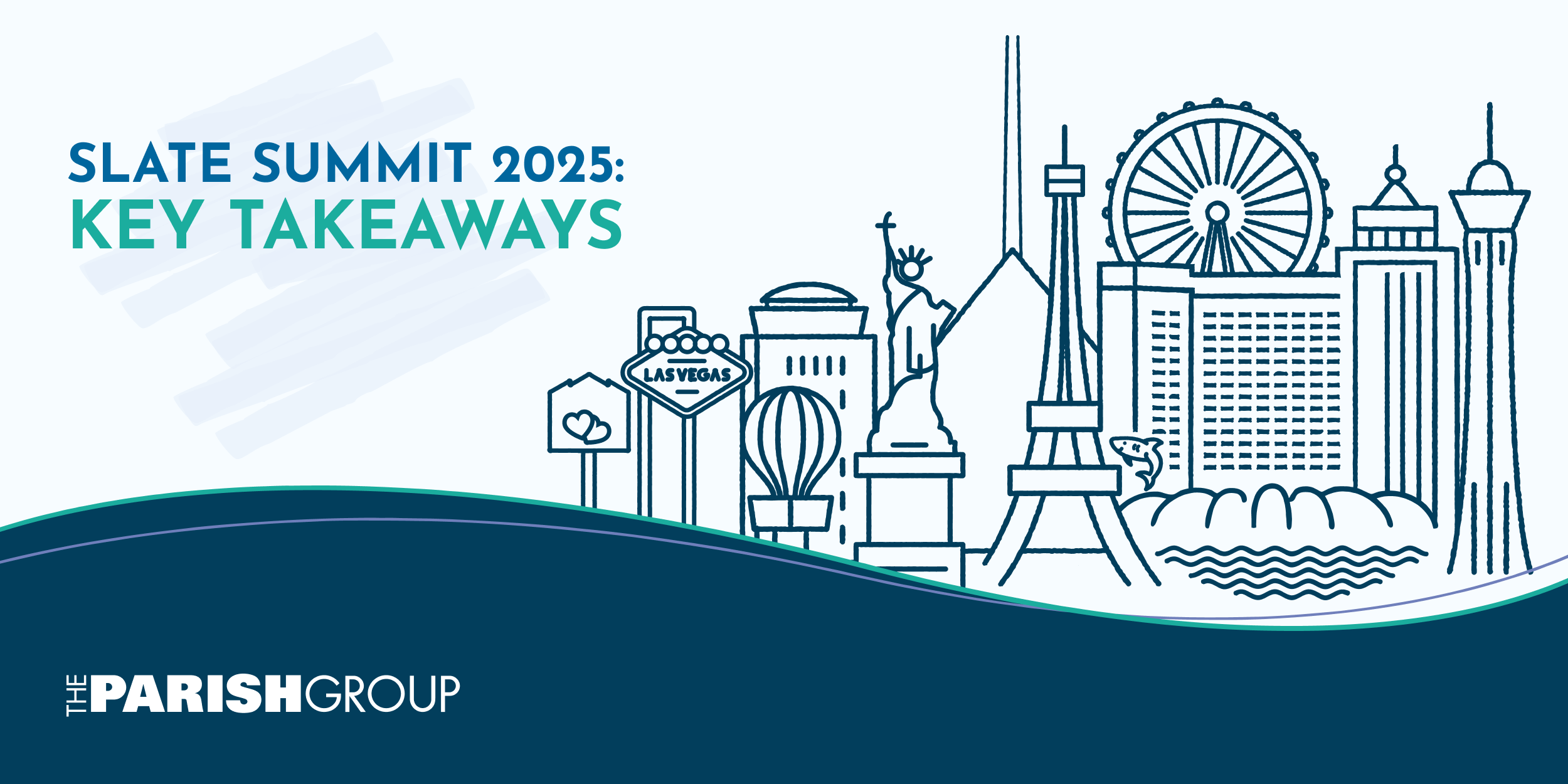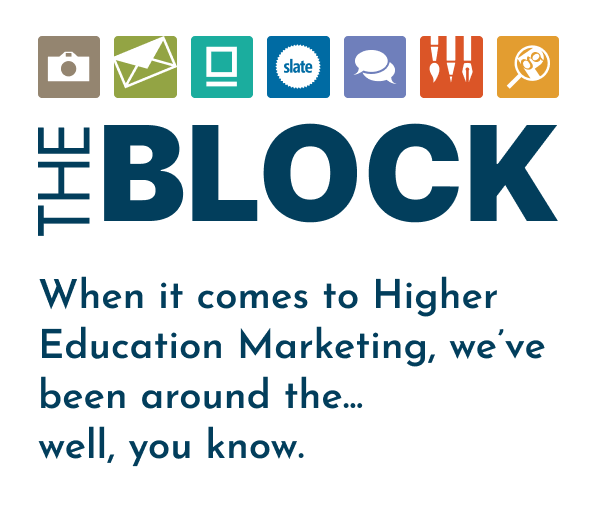
Don’t mind me breaking the fourth wall—hey everyone, it’s Lauren here reporting to you live from the Slate Summit at Chicago’s Navy Pier! As TPG’s resident Slate Strategists, Marcus Webb and I are our boots on the ground taking in the whole experience.
With a record number of attendees, this year’s sold out Slate Summit has been a whirlwind of exciting new features, roundtable discussions (on a fleet of Slate boats), and conversations with Slate users from across the country.
While Slate Summits are known for dancing sharks, early morning mimosas, and late night coding parties, I want to get into the nitty-gritty Slate details, because I know that’s what you all came here to read about.
Whether you’re in attendance or back on campus, this blog brings the most important takeaways right to you.
With Marcus tending our TPG Preferred Partner booth to speak with current and prospective partner institutions, I set out to explore, learn, and bring back all the insider deets for our readers.
New Features
AI is making significant waves at Slate Summit this year, revolutionizing how we interact with its features. From enhancing capabilities of Slate Voice to the introduction of Reader AI, navigating through tasks and making informed decisions has never been easier.
One standout innovation is Slate Voice‘s AI capabilities, which will allow users to preselect AI voices instead of recording messages manually. This advancement not only streamlines communication but also opens doors to intriguing possibilities, such as creating lifelike robo-calls by cloning office staff voices.
Personally, what excites me most is the introduction of Universal Copy and Paste. Imagine effortlessly copying and pasting queries, form data, or email content across different areas of your instance… or to new instances entirely.
This feature will simplify processes and empower users with efficiency.
In our line of work, a student’s timeline is crucial for understanding engagement. However, deciphering meaningful insights from these timelines amidst a barrage of emails, events, and ping data can be daunting.
That’s where the new timeline filter steps in, allowing users to focus on the data relevant to student interactions like event registrations, phone calls, or email behaviors without unnecessary clutter.
Moreover, as educational institutions embrace custom workflows, Slate introduces an improved Workflow Editor—a game-changer in simplifying administrative tasks.
This editor consolidates editing capabilities into a single interface, eliminating the need to navigate through multiple layers. Alexander Clark, Founder and CEO of Technolutions Slate, emphasized that this enhancement is set to rectify past shortcomings, providing a more intuitive user experience.
Affinity Group Conversations
After an exciting opening session, I took to the Chicago River on Slate’s new line of cruise ships! Just kidding… But I did get to spend some time networking with many professionals within the admission communication and marketing industry… while I just so happened to be on a boat.
What struck me most during these conversations was how admission communication professionals today are tasked with far more than just reaching out to prospective students. They’ve become versatile marketers, Slate wizards, and adept strategists all rolled into one.
In this rapidly evolving landscape, many of us with backgrounds in communication strategy have found ourselves diving headfirst into the technical realm of Slate.
Evonne Yi Wen Wong, Communications Coordinator at Oklahoma State University Undergraduate Admissions, put it well when she said, “when you have to do day to day tasks, you don’t have time for strategic planning and vice versa.”
A balance is crucial whether your institution integrates communication and operations or keeps them separate.
“The ability to collaborate with team members who bring different perspectives has enabled me to navigate both Slate and communication strategy, with valuable support along the way,” she added.
Every institution approaches communication strategy differently, and we’re continually learning what resonates most with students in their interactions.
Brooke Gibson, Associate Director of Outreach at Eastern Kentucky University, shared insights from their approach: “we’ve seen a benefit in veering away from templated emails in order to create more of a connection between students and their counselors.”
“Since our communication looks more like an individual message, we are less likely to get lost in the sea of mass messages in a student’s inbox. Our main goal is to create relationships, not a transactional-feeling message” she explained.
During the opening session, Technolutions Slate announced a new version of drip campaigns. Rather than being limited to a +day schedule, when a student falls into a campaign, messages will automatically spread out among your given timeline—finding the right cadence for the student. It’ll also provide insights into exit tracking.
“A conventional drip campaign doesn’t work for all institutions” noted Alyssa Burgmaster, Assistant Director of Operations Design & Communication at Chatham University. “This is a game changer for schools operating on a rolling admission schedule.”
Conversations We’re Having at the TPG Table
As we delve deeper into the Slate Summit, our interactions with current and potential partner institutions have provided us with profound insights into the perspectives of Slate end-users.
One resounding theme that emerged from our discussions is the increasing focus on student success. This topic has gained significant momentum, reflecting a shared commitment among institutions to enhance student outcomes.
We’ve observed a trend where more and more schools are venturing into the realm of Slate for Student Success. For many, this transition marks a natural progression after establishing robust practices within their undergraduate and graduate admissions instances.
Now, the emphasis is on leveraging Slate’s capabilities to support student success initiatives.
Key areas of discussion include data-sharing, resource allocation, and overall operational strategies necessary to effectively expand into this space.
Institutions are eager to explore frameworks and roadmaps that can guide them in integrating student success functionalities seamlessly into their existing systems.
The dialogue at Slate Summit highlights a joint effort to enhance educational experiences and outcomes through Slate’s adaptable platform.
As these discussions advance, we anticipate ongoing collaboration and innovative initiatives aimed at enabling institutions to more effectively support students throughout their academic journey, from enrollment through graduation and beyond.
TPG is Here (Literally) to Help
There’s a lot of information to take in at Slate Summit. We’d love to help you discern the next steps for your team and instance.
Our enrollment experts have served a multitude of institutions and in a multitude of roles. We’ve bean around the block and are ready to listen to your goals, questions, or frustrations. Our strategies are custom-built for each institution we partner with.
See how our services may be of help to your institution by calling 828.505.3000 or reaching out at success@parishgroup.com.
Together, we do BIG things.






